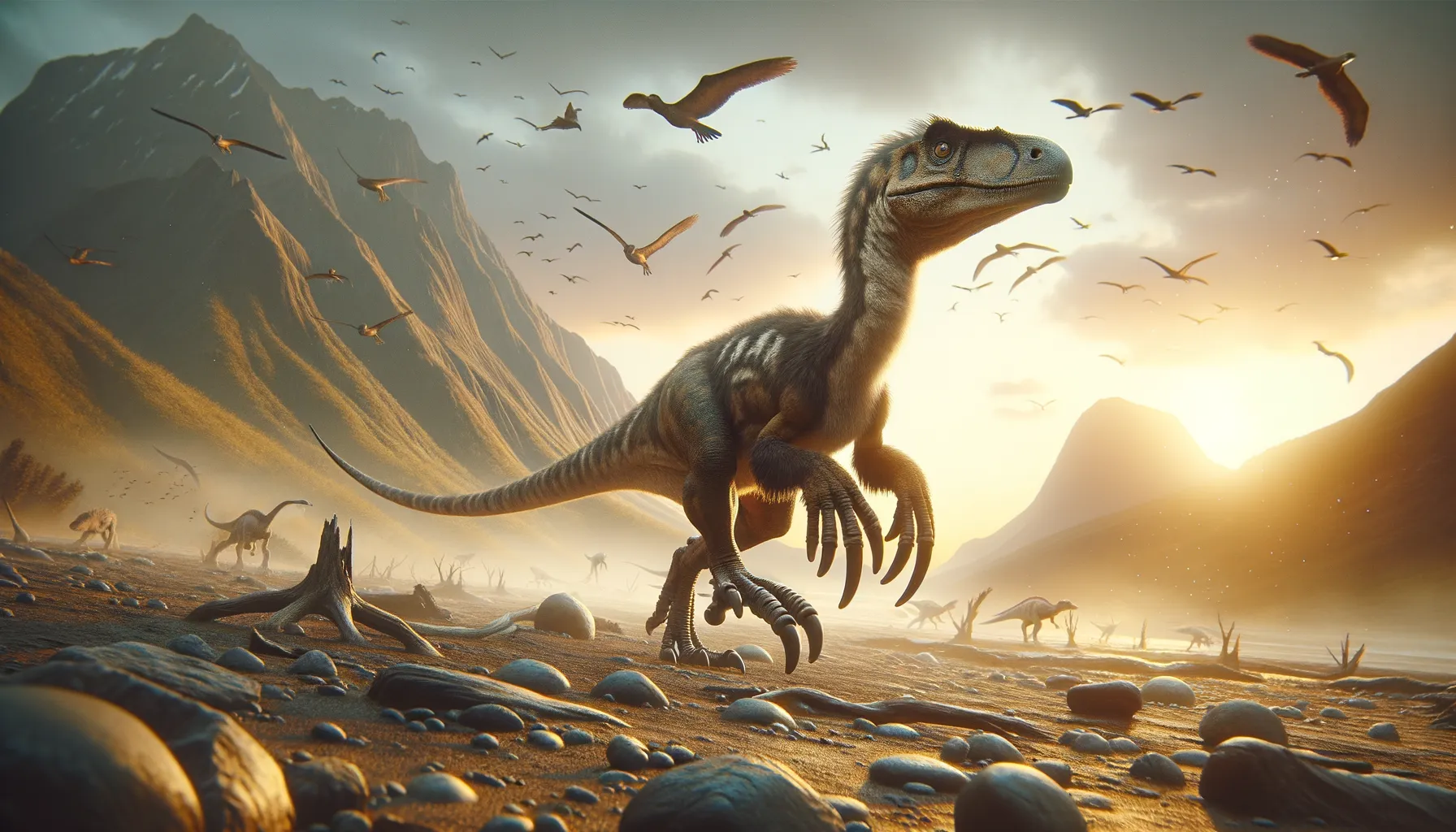
Mononychus
One claw, countless mysteries.
Period
Cretaceous
Length
Reached up to 1.5 meters in length.
Height
Stood approximately 1 meter tall.
Weight
Weighed around 40 to 50 kilograms.
Mononychus was a small, bird-like dinosaur known for its single large claw on each hand. It lived during the late Cretaceous period and had adaptations that suggest it was a swift, ground-dwelling animal. Despite its dinosaurian features, it shared similarities with early birds, providing insights into the evolution of avian species.
Diet
Mononychus was likely an insectivore, using its specialized claws to dig into nests and burrows of insects. Given its size and adaptations, it may have also fed on small vertebrates and plant material occasionally.
Hunting
Its hunting behavior involved using its claw to excavate insects’ nests. Being swift and nimble, Mononychus was adept at catching small, fast prey in its environment.
Environmental challenges
Mononychus lived in environments that likely faced seasonal changes, requiring it to adapt to varying food availability. It had to evade larger predators while foraging. Climate changes during the late Cretaceous could have impacted its habitat and resources.
Speed
Relatively fast for short bursts.
Lifespan
Estimated to be around 10 to 20 years.
First discovery
Discovered in Mongolia in the early 1990s.
Fun Facts
- Mononychus, whose name means 'single claw', was a small dinosaur with a distinctive large claw on each hand.
- This dinosaur lived during the Late Cretaceous period, about 70 million years ago.
- Mononychus belonged to a group of dinosaurs known as alvarezsaurids, which were characterized by their bird-like features.
- Despite having wings, Mononychus was flightless and likely used its strong claws for digging or tearing into tough materials.
- Mononychus was a very small dinosaur, measuring only about 1 meter (3 feet) long, making it closer in size to a chicken than a T. rex.
- Fossils of Mononychus have been found in Mongolia, providing valuable insights into dinosaur evolution in that region.
- Mononychus's unusual anatomy has led scientists to debate its diet, with some suggesting it might have fed on insects or small animals.
Growth and Development
Mononychus likely experienced rapid growth early in its life to reach maturity quickly. Its development would have involved honing physical adaptations, such as its unique claws, for survival. Juvenile Mononychus may have stayed with adults to learn foraging techniques.
Habitat
The habitat of Mononychus consisted of semi-arid conditions with patches of forested areas. It required terrain that allowed for both foraging and hiding from predators. The presence of diverse insect life was crucial for its survival.
Interaction with other species
Mononychus probably faced competition with other small theropods for food. It may have had commensal relationships with larger herbivores by picking off insects disturbed by their movement. Its interactions would have included avoiding predators and possible communal living.
Natural lifespan
Its natural lifespan was likely between 10 to 20 years.
Reproduction
It likely laid eggs in nests on the ground, with some degree of parental care provided. Clutch sizes may have been small, ensuring focused nurturing of offspring. Reproduction could have been seasonal, aligned with environmental conditions.
Social behaviour
Mononychus may have lived in small groups or pairs. Social structures could have included cooperation in foraging or parental care. It likely used visual or vocal signals for communication.
Fossil locations
Fossils of Mononychus have been predominantly found in Mongolia. These discoveries provide critical insights into the paleoecology of the Djadokhta Formation. The fossils help reconstruct the late Cretaceous ecosystem and its inhabitants.
